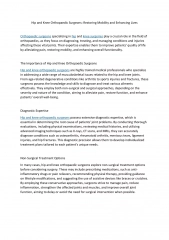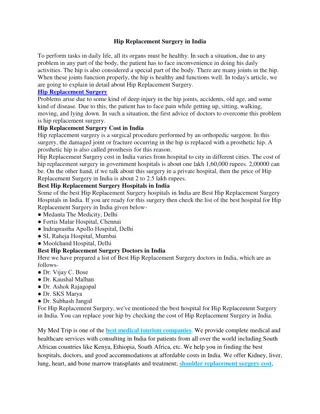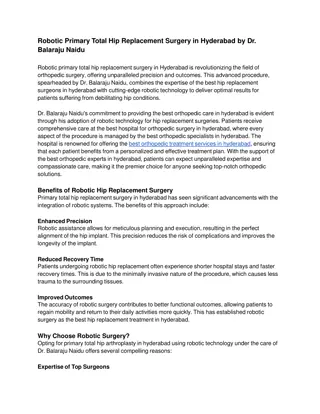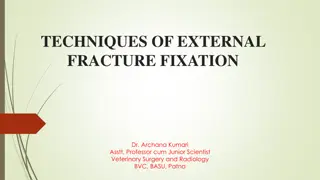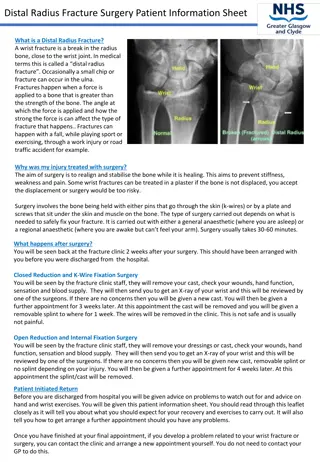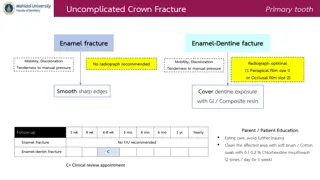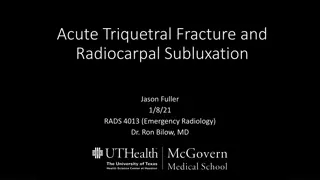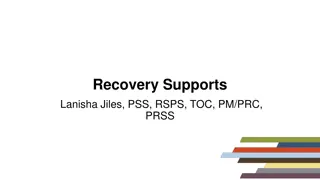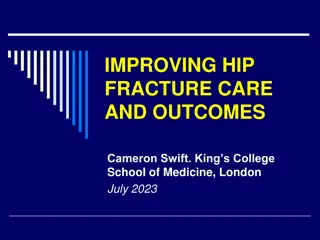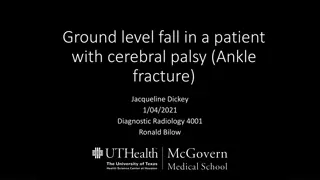Systems Modeling for Hip Fracture Recovery Mechanisms
This research focuses on eliciting mechanisms for hip fracture recovery among older adults to enhance functional recovery post-injury through participatory stakeholder engagement. The study aims to reduce dependency and promote independent living after hip fractures, addressing the rising prevalence of osteoporosis and hip fractures in the aging population.
Download Presentation

Please find below an Image/Link to download the presentation.
The content on the website is provided AS IS for your information and personal use only. It may not be sold, licensed, or shared on other websites without obtaining consent from the author.If you encounter any issues during the download, it is possible that the publisher has removed the file from their server.
You are allowed to download the files provided on this website for personal or commercial use, subject to the condition that they are used lawfully. All files are the property of their respective owners.
The content on the website is provided AS IS for your information and personal use only. It may not be sold, licensed, or shared on other websites without obtaining consent from the author.
E N D
Presentation Transcript
Systems Modeling as an Approach for Eliciting the Mechanisms for Hip Fracture Recovery among Older Adults in Participatory Stakeholder Engagement Setting By: John P. Ansah Assistant Professor Center for Health Integration
Background With its high and increasing life expectancy, Singapore will likely see a rise in osteoporosis, accidental falls, and consequent hip fractures (Ojo et al., 2009; Office of the Surgeon General, 2004). Osteoporosis, a condition of progressive bone loss, resulted in an estimated 1.26 million hip fractures globally in 1990; this number is projected to increase to 4.5 million by 2050 (Gullberg et al., 1997), with most of this increase coming from Asia (Doshi et al., 2014; Gullberg et al., 1997). With a rising prevalence of osteoporosis, there are increasing concerns about hip fractures among older adults, as osteoporosis is associated with a 6 to 7-fold increase in the likelihood of hip fractures (Kanis et al., 2000). In 2015, approximately 2,000 elderly were hospitalized locally due to hip fractures (Khor, 2016). Between 2007 and 2009, the age-standardized incidence of hip fractures in Singapore was estimated to be (per 100,000) 156 in men and 331 in women (Kanis et al., 2012).
Background Hip fractures are costly and demand considerable resources from the healthcare system, accounting for a large proportion of fracture-related healthcare expenditure and mortality in men and women over 50 (Johnell & Kanis, 2006; Kanis & Johnell, 2005; Str m et al., 2011). Considering this demographic reality, the economic burden of hip fractures on health systems is expected to increase. In Singapore, the mean cost of hospitalization due to hip fractures was approximately S$13,314 per patient in 2011, and an additional cost of S$2,690 may result from complications (Tan et al., 2017). Furthermore, considering post-acute rehabilitation, nursing, and caregiving costs (both formal and informal), total lifetime costs are likely to be considerably higher. In the United States, for instance, overall lifetime costs (considering lost productivity and other indirect costs) due to hip fractures were estimated to amount to more than $81,000 (in 1997 US dollars) (Braithwaite et al., 2003).
Overarching Goal These issues highlight the importance of enhancing functional recovery in hip fracture patients to reduce dependency and facilitate independent living within the community. One year after hip fracture, nearly one in four patients will die. Fewer than 50% of survivors can walk unaided, and nearly 40% can perform all activities of daily living (ADLs) independently. To ensure that a patient and family-centered care approach is adopted, this research aims: To actively engage stakeholders (including doctors, physiotherapists, hip fracture patients, and caregivers) using Group Model Building (GMB) to elicit the mechanisms influencing hip fracture recovery, incorporating a feedback perspective to inform system-wide interventions.
Study Context The research team from Duke-NUS Medical School conducted two half-day workshops in Singapore on 29th August 2022 and 31st August 2022. Twenty-five stakeholders participated in the workshop, representing: Singapore General Hospital, Changi General Hospital, St. Andrew s Community Hospital, patients, caregivers, and researchers. The stakeholders include three medical doctors, six physiotherapists, two nurses, eight hip fracture patients, one caregiver, and five researchers. Informed consent was obtained from all participants before the start of the workshop sessions.
Agenda Day #1 Introduction and Background Team Activity Introduction of the research team and stakeholders. Background and aims of the GMB workshop. Introduce stakeholders to causal loop diagramming. Draw a bathtub with a faucet and drain. Use it to explain stock and flow. Presentation of concept model. Distribution colored sheets for writing questions/comments/clarification of the concept model. Facilitator collects the sheets and clusters on the wall and goes through them with stakeholders. Elicit factors: distribute colored sheets for writing factors that promote or inhibit hip fracture recovery. In a round-robin fashion, stakeholders present factors that promote or inhibit hip fracture recovery. Cluster the variables on the wall. Group the variables into sub-groups. Sketching the concept model on white paper and fixing it on the wall. The facilitator selects a sub-group of the clustered factors, then chooses a variable at a time and asks stakeholders to identify the connection between the factor and the concept model. Facilitators ask questions to establish the nature of the causal relationship. After establishing the causal relationship, the facilitator asks a stakeholder to summarize by telling a story embedded in the causal relationship. The facilitator leads the discussion with the stakeholders to identify leverage points for intervention to improve hip fracture recovery. Study Design System Dynamics Introduction Concept Model Presentation Variable elicitation Day #2 Structure Elicitation Exploration of Policy Options
Presentation of Concept Model + Pre-fracture phyiscal function + recoverable function + + stressors - - expectation of recovery + expected recoverable function R1 B1 stressors and phyiscal function recoverable function dynamics R2 + dynamics of expectation uptake and recovery + Physical Function - loss of function recovery of function + + + hip fracture stressor B2 recovery time physical function and resilience interaction resource availability/a ffordability - - uptake of services + + + Psychological Resilience - loss of resilience resilience building
Insights The recovery of loss of function due to hip fracture is attributed to (a) the recognition of a gap between pre-fracture physical function and current physical function and (b) the marshaling of psychological resilience to respond promptly to a physical functional loss via uptake of rehabilitation services. The recognition of the gap and marshaling psychological resilience to close it was determined by the expectation of recovery, which is in turn influenced by the quality of the information provided to patients and their families by healthcare professionals and the appropriate and coordinated delivery of this information. From a policy perspective, this suggests that hip fracture care must prioritize patient education and coordinated communication to raise the expectation of recovery. A rise in the expectation of recovery will lead to increased uptake of rehabilitation services and, consequently, better recovery outcomes.
Insights Support from family, caregivers, friends, and neighbors is essential for the uptake of effective rehabilitation services. This has several policy intervention implications. Social support refers to providing emotional support, allowing hip fracture patients to engage in prescribed exercises recommended by physiotherapists, helping patients use mobility aids to walk, creating a positive environment that encourages patients to adhere to treatment and recovery regimes, and decreasing fear of falling.
Insights Hip fracture patients need financial support to subsidize the cost of medication, rehabilitation services, and mobility aids was reinforced by stakeholders experience of the significant cost burden of hip fracture. Stakeholders indicated that the process of recovery from hip fractures is costly and requires substantial resources. For most elderly individuals, the financial burden, especially if they have no external support from children, family members, and the government, is significant and can affect their ability to take up essential services and negatively impact their recovery trajectory.
Insights In the wake of a stressor-induced physical function loss (such as a hip fracture), a person with high psychological resilience will respond in a way that promotes rapid recovery, while an individual with low psychological resilience will react in a way that leads to a slow recovery or deterioration. Based on this insight, stakeholders suggested that healthcare systems should consider implementing resilience-building programs that help older adults to build psychological resilience to prepare them for responding to life stressors over their life course.


